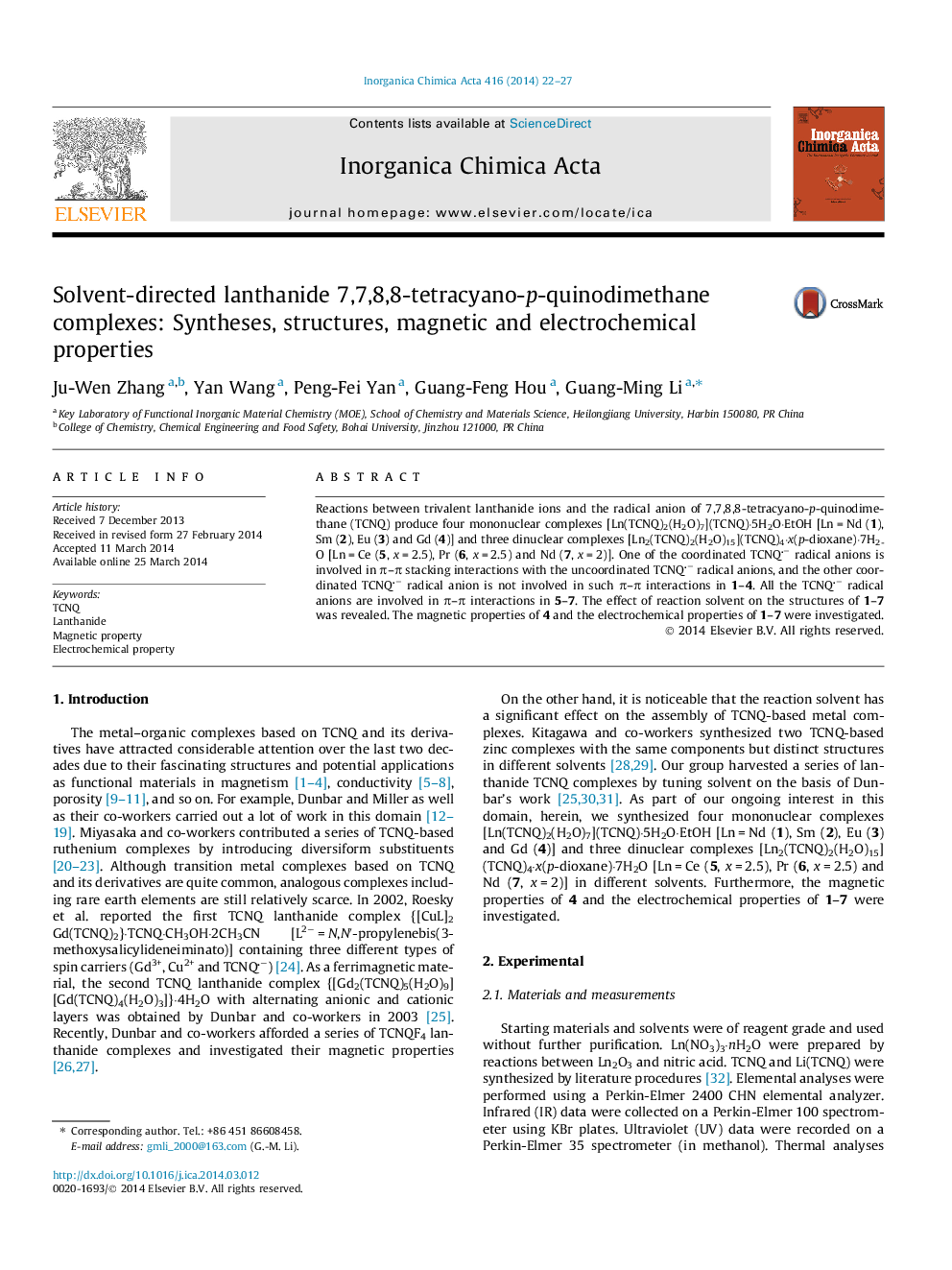| Article ID | Journal | Published Year | Pages | File Type |
|---|---|---|---|---|
| 1309948 | Inorganica Chimica Acta | 2014 | 6 Pages |
•Seven lanthanide TCNQ complexes were obtained.•The reaction solvent has an important effect on the structures of complexes.•The magnetic and electrochemical properties of complexes were investigated.
Reactions between trivalent lanthanide ions and the radical anion of 7,7,8,8-tetracyano-p-quinodimethane (TCNQ) produce four mononuclear complexes [Ln(TCNQ)2(H2O)7](TCNQ)·5H2O·EtOH [Ln = Nd (1), Sm (2), Eu (3) and Gd (4)] and three dinuclear complexes [Ln2(TCNQ)2(H2O)15](TCNQ)4·x(p-dioxane)·7H2O [Ln = Ce (5, x = 2.5), Pr (6, x = 2.5) and Nd (7, x = 2)]. One of the coordinated TCNQ− radical anions is involved in π–π stacking interactions with the uncoordinated TCNQ− radical anions, and the other coordinated TCNQ− radical anion is not involved in such π–π interactions in 1–4. All the TCNQ− radical anions are involved in π–π interactions in 5–7. The effect of reaction solvent on the structures of 1–7 was revealed. The magnetic properties of 4 and the electrochemical properties of 1–7 were investigated.
Graphical abstractSeven lanthanide TCNQ complexes were synthesized. Reaction solvent plays an important role in tuning structures of these seven complexes. Magnetic and electrochemical properties of these seven complexes were investigated.Figure optionsDownload full-size imageDownload as PowerPoint slide
